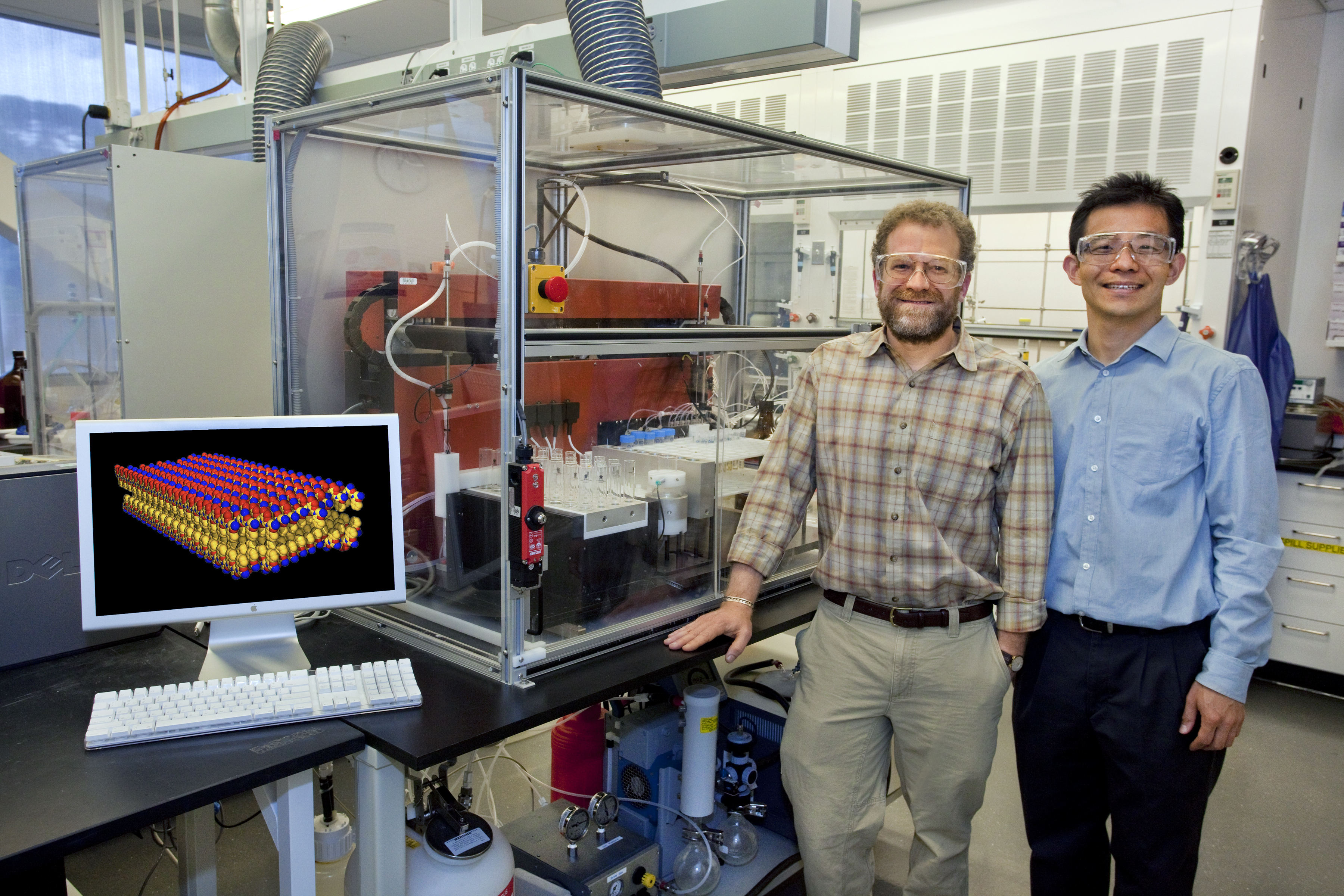Special delivery! See our visiting baby yaks (Dec. 20–Jan. 5) this holiday. Learn more
Science News
Molecular Paper
April 15, 2010

We’ve talked about bio-inspiration on life-size scale—whether adhesive based on a gecko’s feet or oil-absorbing mats based on sea otter fur and human hair—so how about bio-inspiration on a nano scale?
At Berkeley Lab, researchers have created a “molecular paper”—the largest two-dimensional polymer crystal self-assembled in water to date. These self-assembling nanosheets are made of peptoids, engineered polymers that can flex and fold like proteins while maintaining the robustness of synthetic materials. Each sheet is just two molecules thick yet hundreds of square micrometers in area—large enough to be visible to the naked eye.
The research was published online in the journal Nature Materials earlier this week.
“Over the millions and millions of years of evolution, there’s tremendous wisdom and efficiency in biological systems… The impressive nano-structures we see in biology such as proteins and nucleic acids can serve as blueprints for us to make man-made materials that will have improved properties,” according to Ronald Zuckermann, Director of the Biological Nanostructures Facility at the Molecular Foundry at Berkeley Lab. “This new material is a remarkable example of molecular biomimicry on many levels, and will no doubt lead to many applications in device fabrication, nanoscale synthesis and imaging.”
The researchers are hoping to use the new material in many ways— perhaps as a sensor to detect pathogens or toxins in biological warfare or fabricating new devices.
Christian Kisielowski of the National Center for Electron Microscopy further adds, “"The scientific possibilities that come with this achievement challenge our imagination, and will also help move electron microscopy toward direct imaging of soft materials… The design of nature-inspired, functional polymers that can be assembled into membranes of large lateral dimensions marks a new chapter for materials synthesis.”
Photo by Roy Kaltschmidt, Berkeley Lab Public Affairs